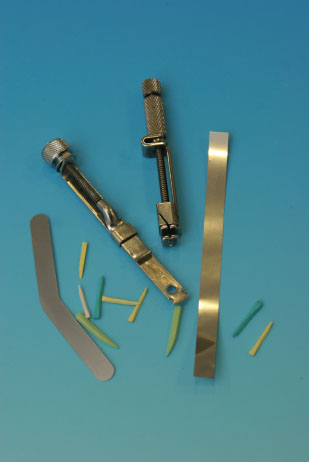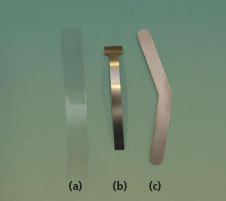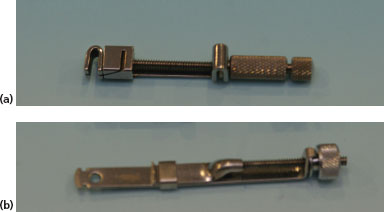SECTION 9
MATRIX BANDS AND MATRIX RETAINERS
When a restoration involves an interproximal surface, it is not possible to achieve a properly adapted restoration without a matrix band. A matrix band creates a temporary interproximal surface, and, when appropriate, a matrix retainer secures the matrix band in place.



FIGURE 9.1a, b, c
Name
Matrix material
Function
Used to form a temporary wall where a proximal surface has been removed or is missing
Varieties
(a) Celluloid strip
- Used for anterior restorations with composite materials
- Also referred to as clear transparent matrix strip
- Single use
- Disposed of in the sharps’ container
- Preformed posterior variety can be available (see Sectional matrix, Figure 9.3)
(b) T-band matrix (straight and curved)
- Most commonly used in paedodontics
- Single use
- Disposed of in the sharps’ container
(c) Stainless steel matrix band (universal)
- Used in conjunction with amalgam restorations and a matrix retainer
- Single use
- Disposed of in the sharps’ container
- Different sizes and shapes available
- Available in pre-contoured shapes
FIGURE 9.2a, b
Name
(a) Tofflemire matrix retainer (b) Siqveland matrix retainer
Function and features
- Used to hold a stainless steel matrix band securely
- Assembled to fit in a particular quadrant of the mouth
- Autoclavable
Varieties
Can be available in disposable plastic



FIGURES 9.3a, b, c, d, e; 9.4
Name
Sectional matrix (Figures 9.3a, b, c, d, e) and BiTineTM ring (Figure 9.4)
Function and features
- Used in conjunction with posterior resto/>
Stay updated, free dental videos. Join our Telegram channel

VIDEdental - Online dental courses


